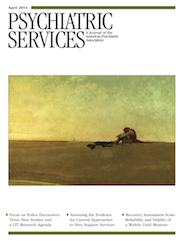Medicaid Lapses and Low-Income Young Adults’ Receipt of Outpatient Mental Health Care After an Inpatient Stay
Abstract
Objective
This study examined low-income young adults’ use of outpatient mental health services after an inpatient mental health stay, with a focus on Medicaid enrollment lapses and public mental health safety-net coverage.
Methods
The sample included 1,174 young adults ages 18 to 26 who had been discharged from inpatient psychiatric care in a mid-Atlantic state. All were enrolled in Medicaid at the time of discharge, and all were eligible for continued outpatient public mental health services regardless of Medicaid enrollment. Administrative claims data were used to examine outpatient mental health clinic use, psychotropic medication possession, inpatient readmission, and emergency department admission during the 365-day period after the index discharge. The main independent variable was a lapse in Medicaid enrollment. An instrumental-variables regression model was used to minimize estimation bias resulting from unmeasured confounding between lapses and service use.
Results
Nearly a third (30%) of the young adults had an enrollment lapse. In instrumental-variables analysis, those whose coverage lapsed were less likely than those who had continuous Medicaid coverage to have at least two clinic visits (38% versus 80%); they also had a lower average psychotropic medication possession ratio (25% versus 55%).
Conclusions
Age-related Medicaid enrollment lapses were common in this sample of young adults and were associated with receipt of less clinical care postdischarge despite continued eligibility for public services. States should examine opportunities to assist young adults with serious mental health problems who are aging out of Medicaid enrollment categories for children.



